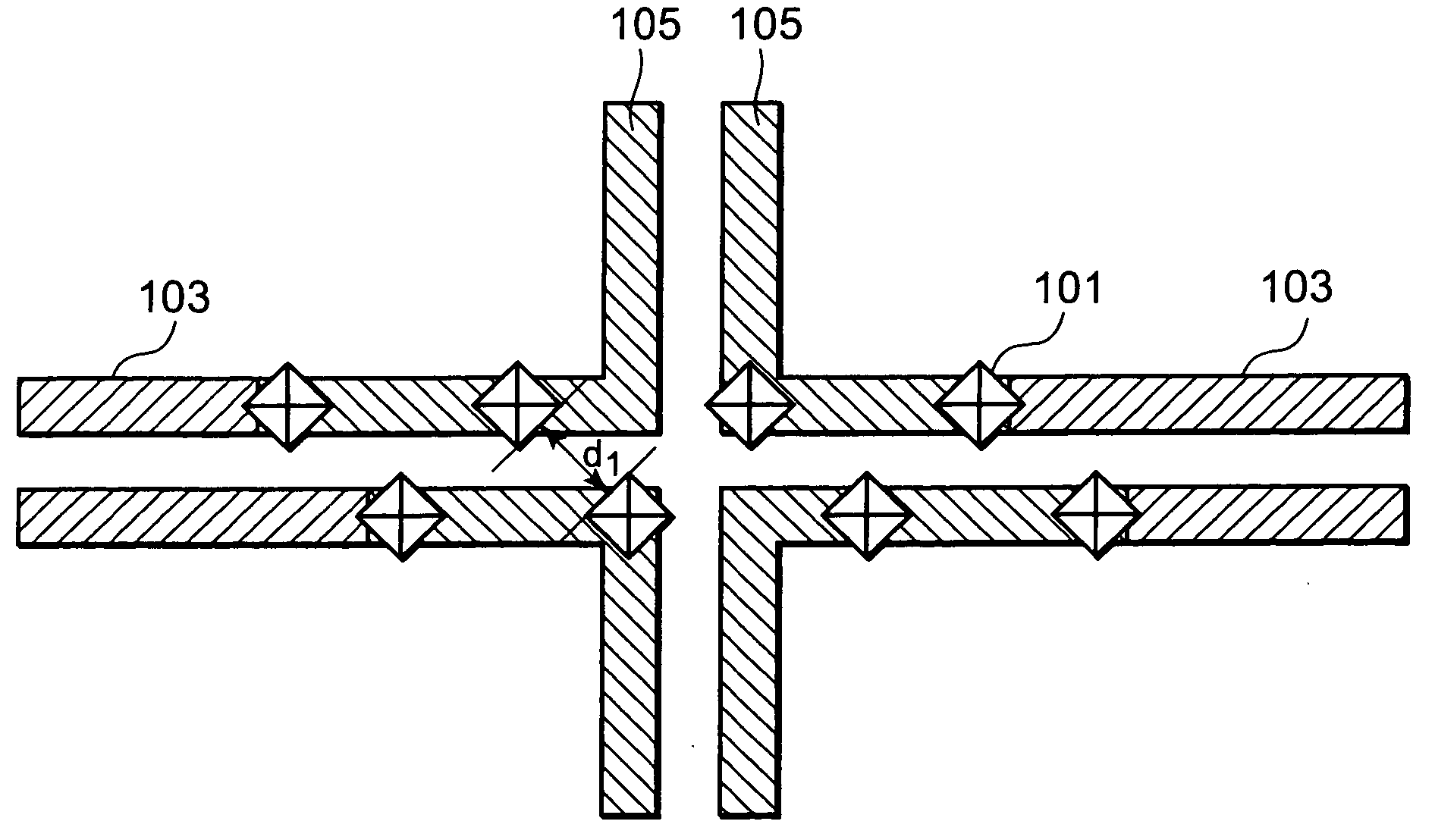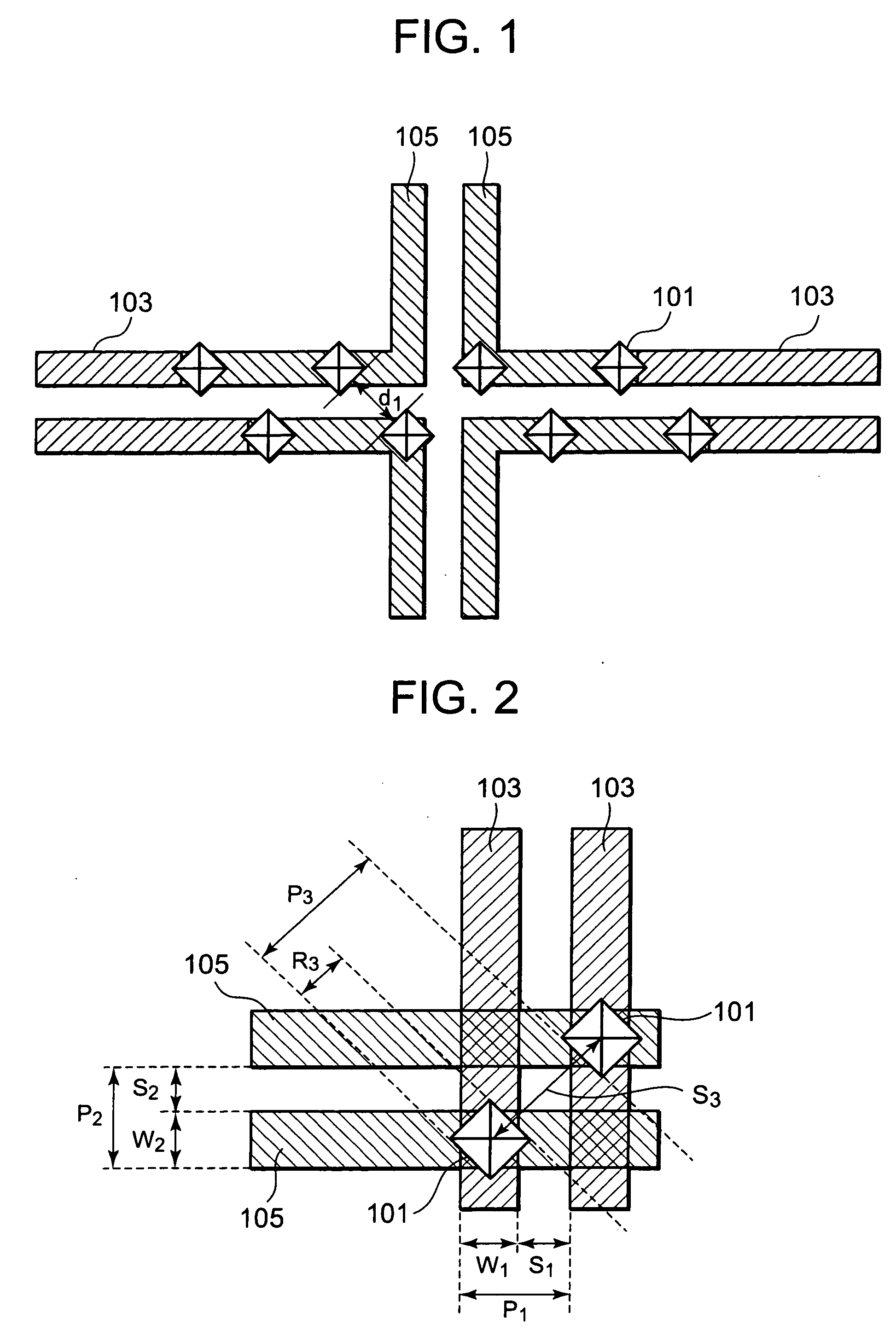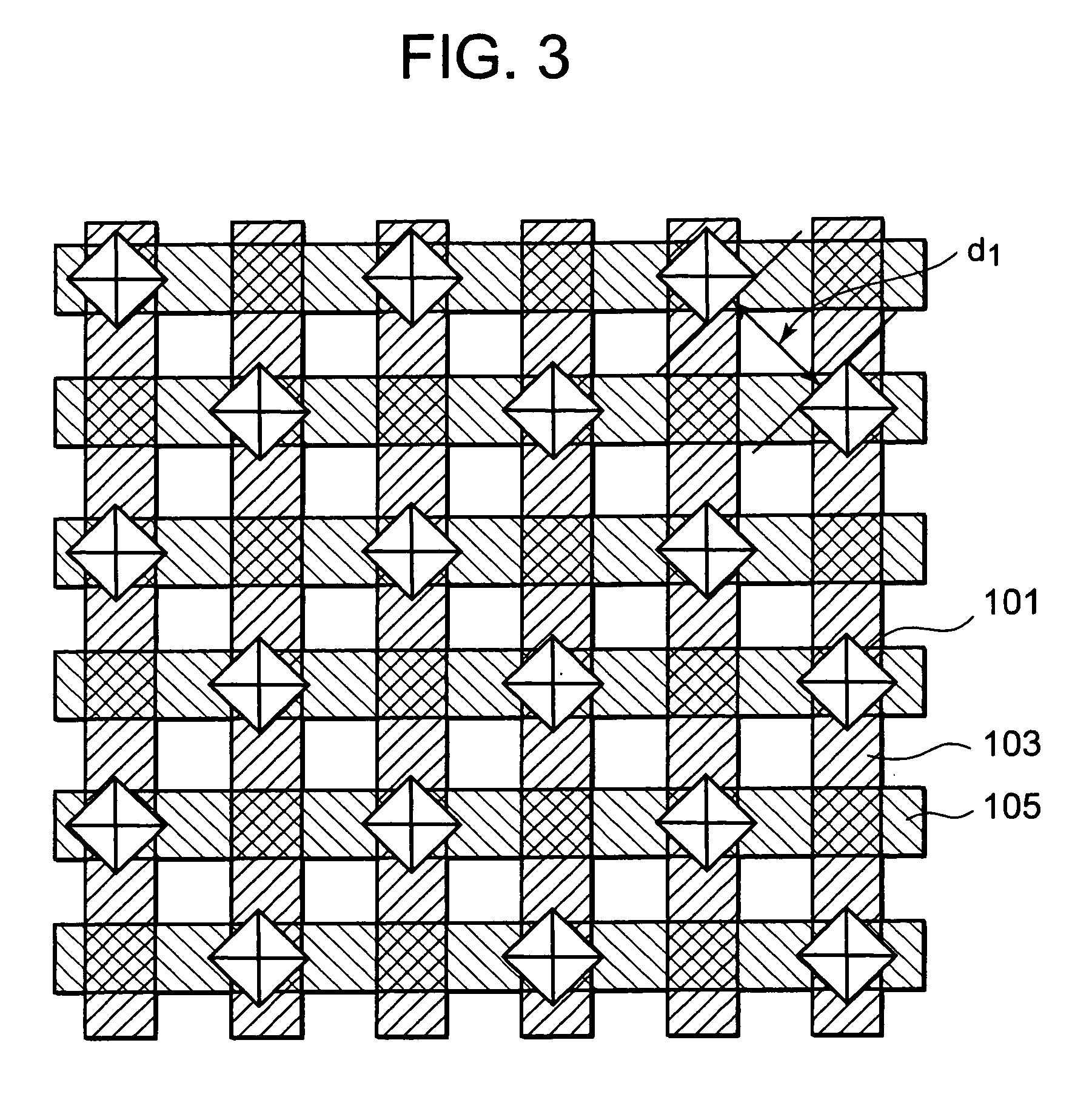Reticle, and method of laying out wirings and vias
a technology of reticle and via, which is applied in the direction of photomechanical equipment, originals for photomechanical treatment, instruments, etc., can solve the problems of difficult to resolve the opening pattern of the via, the resist between the vias loses its shape, and the difficulty of forming the vias as designed in some cases, so as to improve the minimum distance, improve the reliability, and improve the product yield.
- Summary
- Abstract
- Description
- Claims
- Application Information
AI Technical Summary
Benefits of technology
Problems solved by technology
Method used
Image
Examples
example 1
[0053]The via holes were formed by the photolithography using the layout of the wirings and the vias, which is illustrated in FIG. 1. The conditions used in this Example 1 were as follows. The shape of the via opening pattern was square. The minimum distance d1 between the neighboring via opening patterns was expressed by: (2×21 / 2−1)×S, where S is the distance between the wirings.
[0054]As specific conditions, the distance S between the wirings was 70 nm, the wiring width W was 70 nm, the wiring pitch P was 140 nm, the length R of each of the sides of the via opening pattern was 70 nm, and the angle of each of the sides of the via opening pattern with respect to the wiring was 45 degrees or 135 degrees. In this arrangement, the minimum distance d1 between the neighboring via opening patterns was: (2×21 / 2−1)×S=128 nm. The light wavelength (λ) for the light exposure was 193 nm.
[0055]The shape of the via hole formed after the photolithography was circular. The occurrence of the linkage ...
example 2
[0056]The via holes were formed by the photolithography using the layout of the wirings and the vias, which is illustrated in FIG. 3. This Example 2 is the same as Example 1 except that the first wirings 103 and the second wirings 105 were arranged to perpendicularly cross each other. The conditions used in this Example 2 were the same as those used in Example 1. Therefore, the minimum distance d1 between the neighboring via opening patterns was: (2×21 / 2−1)×S, where S is the distance between the wirings, and was obtained as 128 nm.
[0057]The shape of the via hole formed after the photolithography was circular. The occurrence of the linkage between the vias was not observed. Therefore, good via holes were formed.
PUM
| Property | Measurement | Unit |
|---|---|---|
| angle | aaaaa | aaaaa |
| angle | aaaaa | aaaaa |
| length | aaaaa | aaaaa |
Abstract
Description
Claims
Application Information
 Login to View More
Login to View More - R&D
- Intellectual Property
- Life Sciences
- Materials
- Tech Scout
- Unparalleled Data Quality
- Higher Quality Content
- 60% Fewer Hallucinations
Browse by: Latest US Patents, China's latest patents, Technical Efficacy Thesaurus, Application Domain, Technology Topic, Popular Technical Reports.
© 2025 PatSnap. All rights reserved.Legal|Privacy policy|Modern Slavery Act Transparency Statement|Sitemap|About US| Contact US: help@patsnap.com



